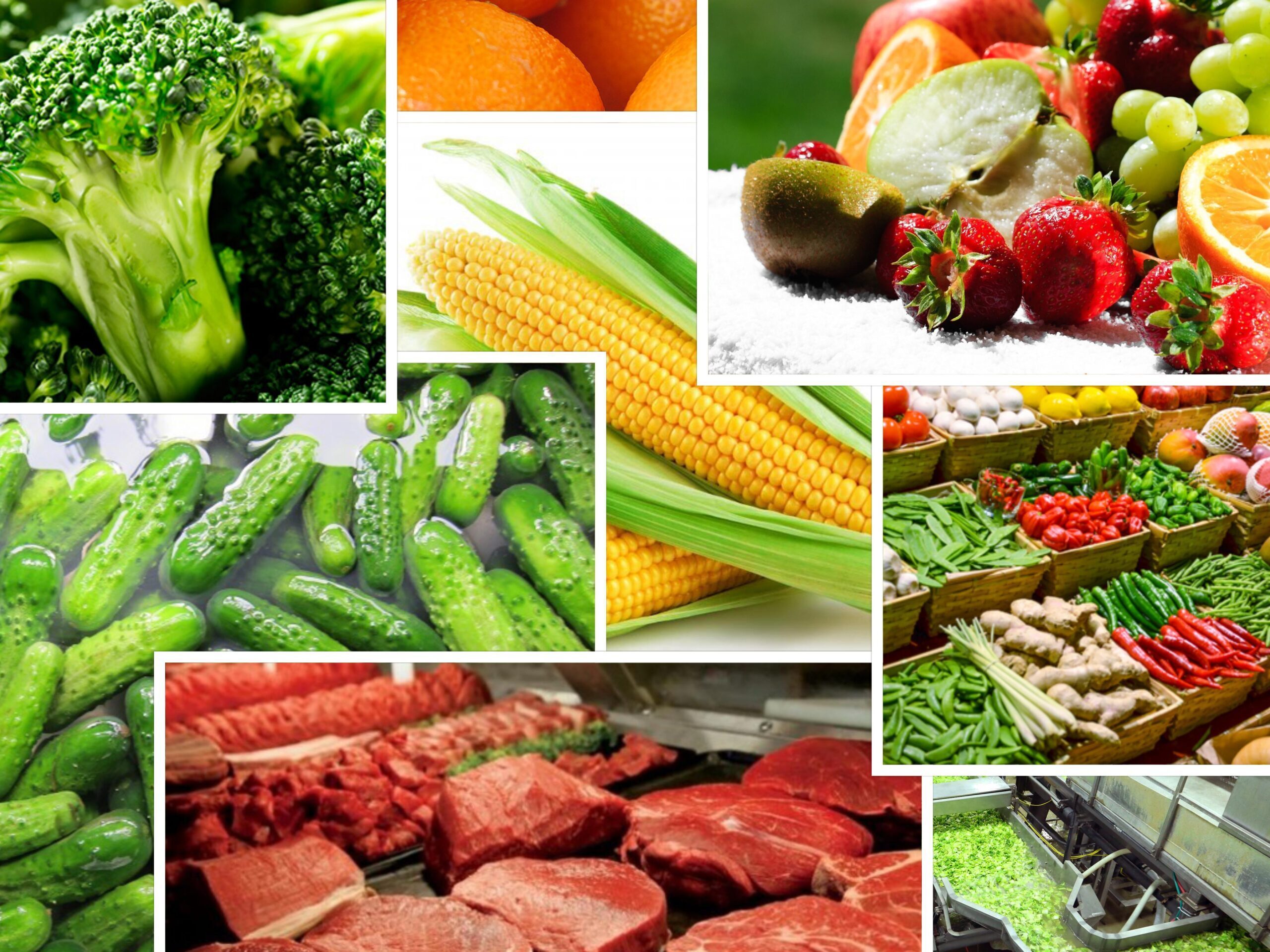What is food processing?
Food processing refers to a set of techniques and methods used to transform raw ingredients into processed food products. It involves a series of physical, chemical, and biological processes that alter the characteristics of food to make it safe, edible, palatable, and more convenient for consumption. Food processing can take place at various stages, from harvesting and primary processing to the production of final food products.
Some common techniques and processes involved in food processing
- Cleaning and Sorting: Raw food ingredients, such as fruits, vegetables, grains, or meat, undergo cleaning and sorting to remove impurities, dirt, debris, and damaged or spoiled parts.
- Cutting and Slicing: Food items are often cut, sliced, or diced to achieve desired shapes and sizes. This process facilitates easier handling, cooking, and consumption.
- Heating and Cooking: Heat is applied through various methods such as boiling, baking, roasting, steaming, or frying to cook or partially cook food. Cooking improves the taste, texture, and digestibility of food, and it can also destroy harmful microorganisms.
- Preservation: Different preservation techniques are used to extend the shelf life of food products and prevent spoilage. Methods include canning, freezing, drying, smoking, salting, fermenting, and adding preservatives. Preservation techniques help maintain the nutritional quality, flavor, and texture of food over an extended period.
- Grinding and Milling: This process involves reducing the size of solid food ingredients, such as grains or spices, into smaller particles or powders. Grinding and milling can enhance the flavor, aroma, and texture of food and facilitate easier incorporation into recipes.
- Mixing and Blending: Ingredients are mixed or blended to achieve uniformity and homogeneity in texture and flavor. Mixing can combine different ingredients, such as in dough preparation, while blending is often used to create smooth textures or to incorporate ingredients into beverages or sauces.
- Packaging: Food products are packaged to protect them from contamination, preserve their quality, and provide information to consumers. Packaging materials can range from cans, bottles, and jars to flexible packaging like pouches or plastic wraps.
- Quality Control: Throughout the food processing chain, quality control measures are implemented to ensure that food products meet safety, quality, and regulatory standards. This involves monitoring and testing for factors such as microbial contamination, nutritional content, sensory attributes, and labeling accuracy.
Emerging trends in food processing
The food processing industry is constantly evolving, driven by a variety of emerging trends that are shaping its future. One of the key trends in food processing is the growing demand for plant-based alternatives. As consumers become more health-conscious and environmentally aware, there is a rising interest in plant-based proteins and meat substitutes. Companies are investing in research and development to create innovative plant-based products that mimic the taste and texture of meat, without the environmental impact. This trend is not only driven by ethical considerations but also by the desire to reduce the carbon footprint associated with meat production.
Another significant trend in food processing is the increasing use of automation and artificial intelligence (AI) in production and packaging processes. Automation enables food processing companies to improve efficiency, reduce costs, and ensure consistent quality. AI-powered machines can carry out tasks with precision and accuracy, minimizing the risk of human error. From robotic arms that handle delicate food items to intelligent machines that monitor and control temperature and humidity, automation is revolutionizing the way food is processed.
Sustainable practices are also gaining momentum in the food processing industry. With concerns over climate change and the depletion of natural resources, companies are adopting environmentally friendly practices to reduce waste and conserve energy. In recent years, there has been a shift towards using renewable energy sources, such as solar and wind power, in food processing facilities. Additionally, innovative packaging solutions, such as biodegradable materials and compostable packaging, are being developed to reduce the environmental impact of food packaging.
Challenges faced by the food processing industry
While the future of food processing promises exciting advancements, it also presents several challenges that the industry must overcome. One of the primary challenges is ensuring food safety and traceability. With the increasing complexity of global food supply chains, it is crucial to have systems in place that can trace the origin of ingredients and track the movement of products throughout the production process. This not only helps in preventing foodborne illnesses but also allows for swift and targeted recalls in case of contamination.
Addressing environmental concerns is another major challenge for the food processing industry. As the demand for food grows, so does the pressure on natural resources and ecosystems. Sustainable practices, such as reducing water usage, minimizing waste, and adopting eco-friendly packaging, are essential to mitigate the environmental impact of food processing. However, implementing these practices often requires significant investments in infrastructure and technology, which can be a challenge for smaller companies.
Meeting the ever-changing demands of consumers is also a challenge that the food processing industry faces. Consumer preferences and trends can shift rapidly, requiring companies to be agile and adaptable. For example, the rise of the flexitarian diet, which involves reducing meat consumption without completely eliminating it, has led to an increased demand for plant-based alternatives. Food processing companies must stay ahead of these trends and develop products that cater to changing consumer preferences while maintaining taste and quality.
Automation and technology in food processing
Automation and technology are revolutionizing the food processing industry, enabling companies to streamline operations, improve efficiency, and enhance product quality. From robotic arms that handle intricate tasks to AI-powered machines that monitor and control production processes, automation is transforming every aspect of food processing.
One area where automation has made significant strides is in food packaging. Automated packaging machines can handle a variety of packaging materials and formats with speed and precision. These machines can accurately measure and dispense ingredients, seal packages, and apply labels, reducing the risk of errors and ensuring consistent quality. Additionally, automation allows for greater flexibility in packaging design, enabling companies to create unique and eye-catching packaging that stands out on store shelves.
AI technology is also playing a crucial role in food processing. AI-powered machines can analyze vast amounts of data in real-time, allowing companies to optimize production processes and improve product quality. For example, AI algorithms can monitor temperature and humidity levels in storage facilities, ensuring optimal conditions for perishable items. AI can also be used to detect contaminants or foreign objects in food products, enhancing food safety.
Sustainable practices in food processing
With growing concerns over environmental sustainability, the food processing industry is embracing sustainable practices to reduce waste, conserve resources, and minimize its carbon footprint. One of the key areas of focus is reducing water usage. Water is a critical resource in food processing, used for cleaning, cooling, and processing. Companies are implementing water-saving technologies, such as advanced filtration systems and water reuse systems, to minimize water consumption and reduce their impact on local water sources.
Energy efficiency is another important aspect of sustainable food processing. Companies are investing in energy-saving technologies, such as LED lighting, high-efficiency motors, and heat recovery systems, to reduce energy consumption and lower greenhouse gas emissions. Some companies are even generating their own renewable energy through solar panels or wind turbines, further reducing their reliance on fossil fuels.
In addition to water and energy conservation, waste reduction is a key focus for sustainable food processing. Companies are implementing strategies to minimize food waste throughout the production process, from sourcing to packaging. This includes optimizing inventory management, using innovative packaging solutions to extend shelf life, and donating excess food to food banks or composting facilities. By reducing waste, companies can not only reduce their environmental impact but also improve their bottom line.
Innovations in food processing
Innovation is at the heart of the future of food processing. Companies are constantly exploring new technologies and techniques to improve efficiency, enhance product quality, and meet consumer demands. One area of innovation is in the development of new ingredients and flavors. Companies are investing in research and development to create unique and exciting flavors that cater to diverse consumer preferences. This includes exploring the use of natural ingredients, as well as novel ingredients derived from alternative sources, such as insects or algae.
Another area of innovation is in the development of sustainable packaging solutions. Companies are exploring biodegradable and compostable materials to reduce the environmental impact of packaging. Additionally, intelligent packaging solutions, such as sensors that monitor product freshness or temperature-sensitive labels that indicate food spoilage, are being developed to improve food safety and quality.
The use of advanced analytics and machine learning is also transforming the food processing industry. Companies are leveraging data to gain insights into consumer preferences, optimize production processes, and improve supply chain efficiency. For example, data analytics can help companies identify trends and patterns in consumer behavior, allowing for targeted marketing campaigns and product development.
Future opportunities in the food processing industry
The future of food processing is full of opportunities for companies that can adapt to changing consumer preferences and embrace innovative technologies. One of the key opportunities lies in the development of personalized nutrition. As advancements in genetics and personalized medicine continue to evolve, there is a growing interest in personalized diets tailored to individual needs. Food companies can leverage technology, such as genetic testing or AI-powered nutrition apps, to create customized food products that meet specific nutritional requirements.
Another opportunity lies in the development of sustainable and efficient farming practices. As the global population continues to grow, the demand for food will increase, putting pressure on agricultural resources. Food processing companies can work closely with farmers to develop sustainable farming methods that minimize the use of chemicals, reduce water consumption, and promote biodiversity. This not only benefits the environment but also ensures a consistent supply of high-quality ingredients for food processing.
The rise of e-commerce presents another significant opportunity for the food processing industry. With the increasing popularity of online shopping, companies can reach a wider customer base and offer a greater variety of products. Additionally, direct-to-consumer models allow food processing companies to establish a closer relationship with consumers, gather valuable feedback, and tailor their products to meet specific needs.
Conclusion
The future of food processing is filled with exciting possibilities. From the development of plant-based alternatives to the use of automation and AI in production processes, the industry is at the forefront of innovation. However, along with these advancements come challenges, such as ensuring food safety, addressing environmental concerns, and meeting changing consumer demands. By embracing sustainable practices, investing in technology, and staying ahead of trends, the food processing industry can navigate these challenges and create a future where safe, nutritious, and sustainable food is accessible to all. So, get ready to embark on this journey of transformation and exploration, as the future of food processing unfolds before our eyes.
Our Blog ↗
Read the latest from our blog
Ask a Question ↗
Ask a question and get answers from our community
Give Feedback ↗
We value your feedback.

